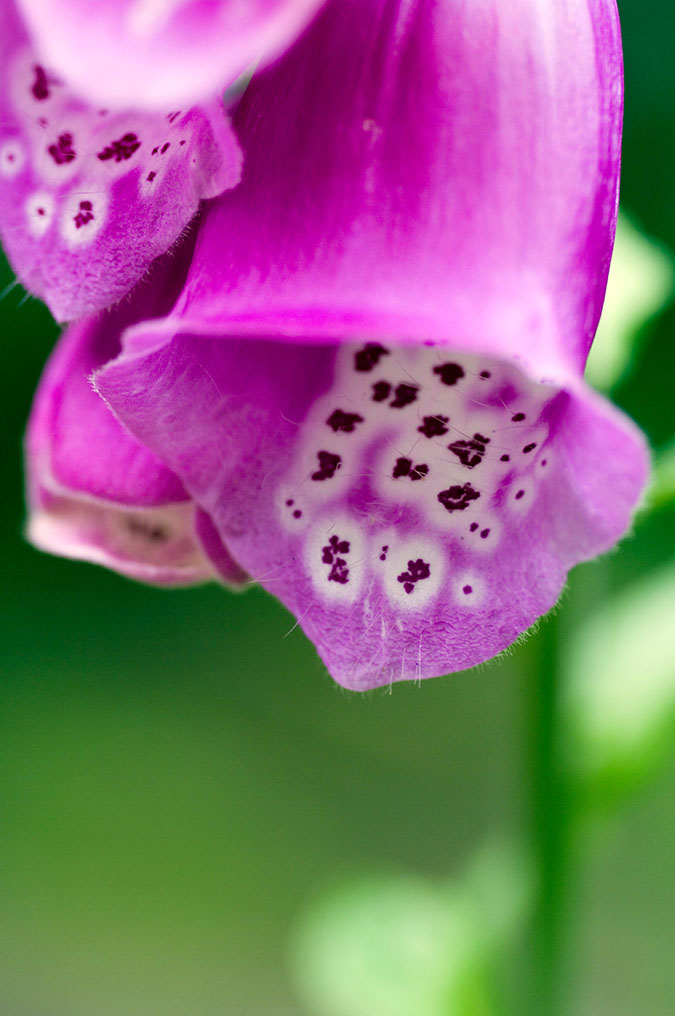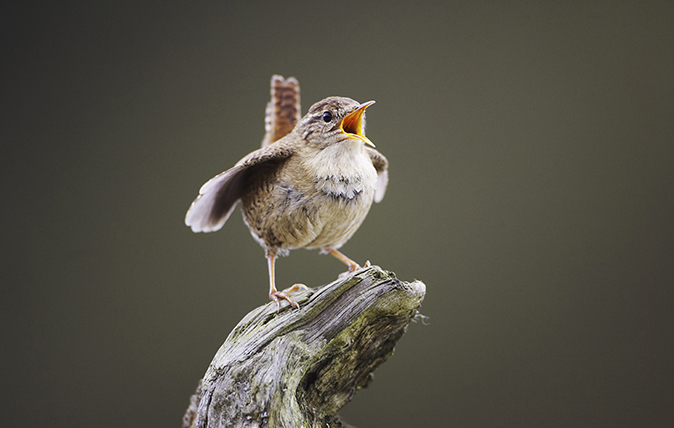The incredible tale of the foxglove, from curing to disease to inspiring Van Gogh’s most striking paintings
A tale of skulduggery, poisoning, witches and even marketing men runs through the history of the foxglove, as Ian Morton explains.


Let's start with a name that demands explanation – one which, thankfully, is straightforward. Both fox and glove are original Anglo-Saxon words and a legend from those distant times told how sympathetic fairies gave Reynard the blossoms of the plant to wear on his toes to muffle his approach to his prey.
The legend endured through the ages, although a persistent youngster might be further informed that, in succeeding centuries, as folk medicine developed, so did regional names. Fairy fingers, ladies’ thimbles, rabbit flowers, throatwort, flapdock, cow-flop, lusmore, lionsmouth, Scotch mercury, dead man’s bells, witches’ gloves – more than 30 are recorded. None of Britain's wildflowers has attracted more pseudonyms than the foxglove.
Dead man’s bells rang a warning of the toxic nature of the foxglove, because all parts of the plant contain a cardiac glycoside, the effect of which could be swift and fatal. Witches’ gloves reflected the use of the plant by village wise women who were too often caught up in periodic medieval panic attacks and persecuted for alleged witchcraft, but whose knowledge of hedgerow remedies was the only medical recourse available to the rural poor.

The foxglove was one of a number of plants whose curative powers were problematical. For example, excessive application of a green unguent of henbane, nightshade and mandrake, which seethed with a tropane alkaloid, hyoscine, could produce hallucinations of flying. Confessions under torture thus gave rise to the belief, embraced by prosecutors and a superstitious public, and beloved by the Halloween industry, that witches ride broomsticks by moonlight.
By comparison, the foxglove was a fairly mild plant, as it was used with care to treat abscesses, boils, headaches, paralysis, stomach ulcers, open wounds and epilepsy.
However, clumsy treatment or overdosing could result in vomiting, diarrhoea, delirium and death. It is recorded that children died after drinking water from vases in which foxgloves had stood. The plant could also induce xanthopsia, a condition that modifies colour perception, causing objects to appear yellowish or green and producing blue halos around light sources.
Some art critics suspect that Vincent van Gogh’s ‘yellow period’ of 1886–90 was at least partly influenced by xanthopsia and, together with malnutrition and absinthe, digitalis may have been implicated. Admitted to the Saint-Rémy asylum in 1889, van Gogh was prescribed digitalis by his physician Dr Paul-Ferdinand Gachet. He painted two famous 1890 portraits of Gachet. In both, the doctor is holding a stem of foxglove.
Exquisite houses, the beauty of Nature, and how to get the most from your life, straight to your inbox.

The value of the foxglove in heart treatments came to be recognised in medical circles after a doctor and botanist working in Birmingham General Hospital, William Withering, was made aware in 1775 that the condition of the dean of Brasenose College, Oxford – a patient suffering from the congestive heart failure known as dropsy – improved dramatically after treatment with a secret herbal remedy.
This had been provided by a gypsy or by old Shropshire village woman – the story varied. So, too, did the tale of quite how an intrigued Dr Withering pursued the secret, but, in any event, he secured a recipe or sample of the nostrum, which was administered as a tea.
The infusion included a score of hedgerow and garden herbs, yet Dr Withering determined that the active ingredient was derived from the foxglove – the substance known as digitalis since 1753, after Swedish botanist Carl Linnaeus had classified the plant as Digitalis purpurea, his terminology based on the Latin for finger and the hue of the common foxglove widespread throughout most of temperate Europe.

Dr Withering spent nine years testing prep-arations from different parts of the plant collected at different times of the year and, in 1785, aged 44, he published his Account of the Foxglove. He documented 156 cases from which he had determined the best and safest ways to administer the drug, taken from the second-year growth.
Dr Withering overcame an attempt by eminent medical contemporary Erasmus Darwin (grandfather of Charles) to hijack the credit for his pioneering research and his reputation survived. His name still resounds in the University of Birmingham Medical School and his work marks the pivotal point when pharmacology both recognised valuable elements in traditional herbalism and began to supplant it.

The ongoing story of how this important figure supposedly went about securing that secret Shropshire remedy also has an element of hijack. With the value of digitalis fully recognised – it controls chaotic heart contractions and reduces oxygen needs by blocking an enzyme that regulates electrical activity – commercial products based on it were inevitable.
Enter America’s oldest and biggest pharmaceutical company Parke-Davis (now part of Pfizer), which was established in 1895. To market digitalis products, the company invited its advertising team to go back to Dr Withering’s acquisition of the original remedy.
In 1928, Parke-Davis launched a campaign that devised Old Mother Hutton, a Shropshire herb-woman. Its illustrator William Meade Prince depicted a dandyish and rather oleaginous Dr Withering ‘exchanging golden sovereigns for the secret of the wayside flower’ with a rather bent old woman sitting on a wall, although the copywriter developed the notion of professional chicanery taking advantage of an elderly and naive cottager.
Dennis Krikler, late editor of the British Heart Journal, described the tale as ‘harmless speculation’ surrounding Dr Withering’s contact with a rural woman herbalist, if indeed it ever happened, but he authoritatively identified Old Mother Hutton as a colourful invention.
South African-born Mr Krikler regretted that subsequent USA commentators had not returned to source material, preferring the myth of a simple countrywoman cheated out of her place in medical history by an unscrupulous practitioner – fiction stranger than truth in the best Hollywood tradition.
Old Mother Hutton accordingly survives in the annals of the foxglove, a tribute to the ad man’s art. Digitalis purpurea, an unknown Shropshire herb-woman, Birmingham General, a sick Oxford College dean, Vincent van Gogh and, above all, the assiduous William Withering, deserve better.

Delights of the daisy: The tiny flower with huge charm that's entranced artists for centuries
We all love a daisy chain, but there’s more to this humble flower than meets the (day’s) eye, discovers Ian

Credit: Alamy
The delights of dung: 11 things you never knew about cowpats
It attracts no public regard apart from taking care not to step in it, but it plays a big role

The wren: 8 things you ought to know about Britain's most common bird
It may be diminutive, but the perky-tailed wren has a powerful song and the ancient title of king among birds,

Why some birds mate for life – and why some play the field (and the trees, ponds and rooftops)
Cooing doves might be synonymous with lasting love, but, when it comes to romance, the bird world isn’t entirely faithful,

Credit: Nature Picture Library
The bizarre world of woodlice: 176 crazy nicknames and seven pairs of lungs
The friendly little woodlice with whom you share your garden – and your home – are creatures of extraordinary wonder. Ian Morton's
Country Life is unlike any other magazine: the only glossy weekly on the newsstand and the only magazine that has been guest-edited by His Majesty The King not once, but twice. It is a celebration of modern rural life and all its diverse joys and pleasures — that was first published in Queen Victoria's Diamond Jubilee year. Our eclectic mixture of witty and informative content — from the most up-to-date property news and commentary and a coveted glimpse inside some of the UK's best houses and gardens, to gardening, the arts and interior design, written by experts in their field — still cannot be found in print or online, anywhere else.
